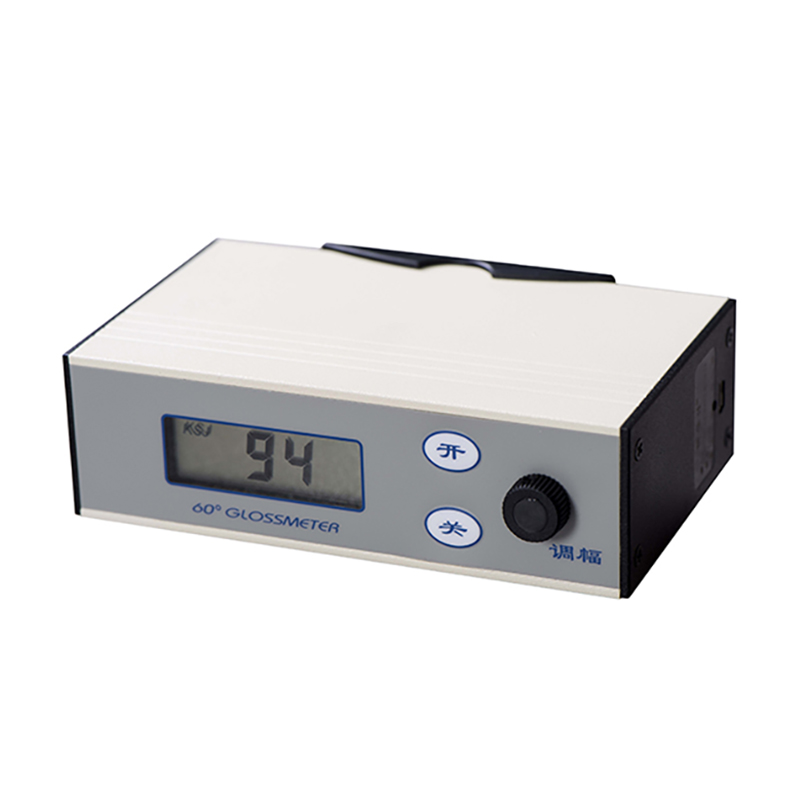头部邮箱+阿里巴巴
E-mail: sales@ksj.cn 

Enter search content

NEWS
News
Hot Products
Improve the Performance of Optoelectronic Components with a Metal Gloss Meter
- Time of issue:2023-11-02
(Summary description)Introduction:
Optoelectronic components play a crucial role in various industries, including telecommunications, automotive, and consumer electronics. These components rely on the precise reflection and transmission of light for optimal performance. However, the performance of optoelectronic components can be significantly influenced by surface characteristics, such as glossiness. In this article, we will explore how using a metal gloss meter can improve the performance of optoelectronic components, enabling you to achieve superior results in your projects.
Improve the Performance of Optoelectronic Components with a Metal Gloss Meter
(Summary description)Introduction:
Optoelectronic components play a crucial role in various industries, including telecommunications, automotive, and consumer electronics. These components rely on the precise reflection and transmission of light for optimal performance. However, the performance of optoelectronic components can be significantly influenced by surface characteristics, such as glossiness. In this article, we will explore how using a metal gloss meter can improve the performance of optoelectronic components, enabling you to achieve superior results in your projects.
- Categories:Industry news
- Author:
- Origin:
- Time of issue:2023-11-02 09:42
- Views:0
Introduction:
Optoelectronic components play a crucial role in various industries, including telecommunications, automotive, and consumer electronics. These components rely on the precise reflection and transmission of light for optimal performance. However, the performance of optoelectronic components can be significantly influenced by surface characteristics, such as glossiness. In this article, we will explore how using a metal gloss meter can improve the performance of optoelectronic components, enabling you to achieve superior results in your projects.
1. Understanding the Importance of Gloss in Optoelectronic Components
Optoelectronic components, such as lenses, mirrors, and display screens, rely on the precise control of light. Gloss, which refers to the visual perception of a surface's reflectance, plays a vital role in determining the performance of these components. A surface with the appropriate gloss level ensures efficient light transmission and reflection, leading to enhanced optical performance.
2. Introducing the Metal Gloss Meter: A Game-Changing Tool
A metal gloss meter is a specialized device designed to measure the gloss of various surfaces, including optoelectronic components made from metal. This handheld instrument utilizes advanced technology to provide accurate and reliable gloss measurements. With a metal gloss meter, you can easily assess the glossiness of surfaces, allowing you to optimize the performance of your optoelectronic components.
3. Benefits of Using a Metal Gloss Meter for Optoelectronic Component Testing
Using a metal gloss meter offers several benefits when it comes to testing and optimizing the performance of optoelectronic components:
3.1. Precise Gloss Measurements: A metal gloss meter provides precise gloss measurements, ensuring that you can accurately assess the gloss level of your optoelectronic components. This enables you to make informed decisions regarding surface treatments and coatings for improved performance.
3.2. Quality Control: By incorporating a metal gloss meter into your quality control processes, you can ensure that every optoelectronic component meets the desired gloss standards. This helps maintain consistent performance and enhances customer satisfaction.
3.3. Surface Evaluation: The ability to evaluate the glossiness of optoelectronic component surfaces allows you to identify any imperfections or inconsistencies that may affect their performance. With this information, you can take corrective measures to enhance their overall quality.
4. How to Properly Measure Gloss with a Metal Gloss Meter
To obtain accurate gloss measurements using a metal gloss meter, follow these steps:
4.1. Prepare the Surface: Ensure that the surface of the optoelectronic component is clean and free from any contaminants. Any dirt or residue can affect the gloss measurement.
4.2. Calibrate the Metal Gloss Meter: Before taking measurements, it is essential to calibrate the metal gloss meter according to the manufacturer's instructions. This ensures accurate results.
4.3. Position the Metal Gloss Meter: Place the metal gloss meter perpendicular to the surface of the optoelectronic component. Ensure that the instrument covers an area representative of the component's gloss characteristics.
4.4. Take the Measurement: Press the measurement button on the metal gloss meter to record the gloss value. Repeat the process multiple times to obtain an average gloss reading.
4.5. Analyze the Results: Use the gloss measurements to assess the gloss level of your optoelectronic component. Compare the results with the desired gloss standards to determine if any adjustments or improvements are necessary.
5. Factors to Consider When Choosing a Metal Gloss Meter
When selecting a metal gloss meter for your optoelectronic component testing, consider the following factors:
5.1. Accuracy: Ensure that the metal gloss meter provides accurate and reliable gloss measurements. Look for instruments with high repeatability and reproducibility.
5.2. Measurement Range: Consider the range of gloss levels the metal gloss meter can measure. Opt for a device that covers the gloss levels typically encountered in your optoelectronic components.
5.3. Portability: If you require mobility in your testing processes, choose a metal gloss meter that is lightweight and portable. This allows you to conveniently measure gloss on-site or in different locations.
5.4. Ease of Use: Look for a metal gloss meter that offers user-friendly features and intuitive controls. A device with a clear display and straightforward operation simplifies the testing process.
5.5. Compatibility: Ensure that the metal gloss meter is compatible with different types of optoelectronic components and surfaces. This versatility enables you to assess gloss in a wide range of applications.
6. FAQs
6.1. What is gloss?
Gloss refers to the visual appearance of a surface in terms of its ability to reflect light. It can be described as the amount of light reflected off a surface compared to the amount of light incident upon it.
6.2. How does gloss affect optoelectronic component performance?
Gloss affects the transmission and reflection of light in optoelectronic components. The optimal gloss level ensures efficient light transfer, leading to improved optical performance.
6.3. Can a metal gloss meter be used for different types of optoelectronic components?
Yes, a metal gloss meter can be used for various optoelectronic components, including lenses, mirrors, screens, and other metal-based surfaces.
6.4. Are there any industry standards for gloss measurements?
Yes, several industry standards define gloss measurement procedures and specifications, ensuring consistency and comparability in gloss measurements.
6.5. Can a metal gloss meter help improve the overall quality of optoelectronic components?
Absolutely. By accurately measuring gloss and identifying any deviations from desired standards, a metal gloss meter enables you to take corrective actions and enhance the quality of your optoelectronic components.
Conclusion:
Utilizing a metal gloss meter can significantly enhance the performance of optoelectronic components. By measuring and controlling the gloss levels of these components, you can ensure optimal light transmission and reflection, leading to improved overall performance. With its precision and reliability, a metal gloss meter becomes an invaluable tool in optimizing the quality and functionality of your optoelectronic projects. Invest in a high-quality metal gloss meter today and unlock the true potential of your optoelectronic components.
Scan the QR code to read on your phone

After eighteen-years’development, KSJ Glossmeters have been widely used all over the world in gloss measuring of paintwork, decorative materials, woodenwares, ceramic, printing ink, paper, as well as metal polishing and depositing. And becoming the first choice for experts in the above fields.
Online Message
Contact Us



















